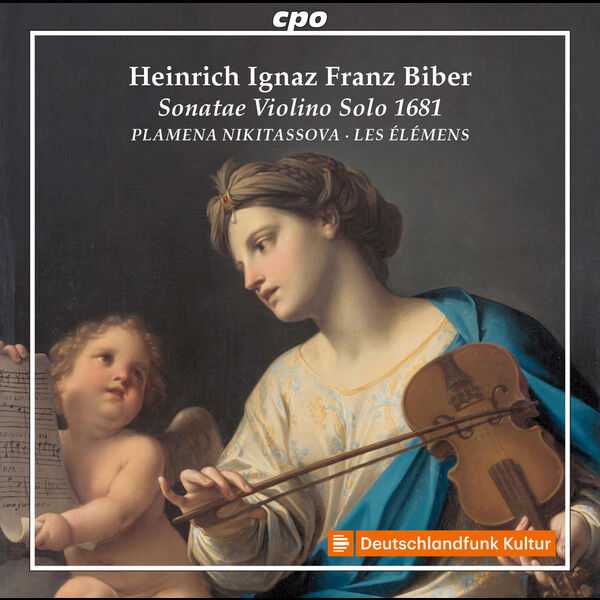

Composer: Heinrich Ignaz Franz von Biber
Performer: Les Éléments
Number of Discs: 2
Format: FLAC (tracks)
Label: CPO
Catalogue: 555481-2
Release: 2022
Size: 677 MB
Recovery: +3%
Scan: yes
CD 01
Sonata No. 1 in A Major, C. 138
01. I. —
02. II. Adagio
03. III. —
04. IV. Presto
05. V. Presto
06. VI. Finale
07. VII. Presto
Sonata No. 2 in D Minor, C. 139
08. I. —
09. II. Aria
10. III. Adagio
11. IV. —
12. V. Finale
Sonata No. 3 in F Major, C. 140
13. I. Adagio
14. II. Adagio
15. III. Aria
16. IV. Forte presto
17. V. Adagio
18. VI. —
Sonata No. 4 in D Major, C. 141
19. I. —
20. II. Presto
21. III. Gigue
22. IV. Adagio
23. V. Aria
24. VI. Finale
CD 02
Sonata No. 5 in E Minor, C. 142
01. I. —
02. II. Variatio
03. III. Adagio
04. IV. Presto
05. V. Aria
Sonata No. 6 in C Minor, C. 143
06. I. —
07. II. Passacaglia
08. III. Adagio
09. IV. —
10. V. Gavotte
11. VI. Adagio
Sonata No. 7 in G Minor, C. 144
12. I. —
13. II. Aria presto
14. III. Adagio
15. IV. Ciacona
Sonata No. 8 in G Major, C. 145
16. I. —
17. II. Aria
18. III. Sarabande
19. IV. —
20. V. Allegro
Vilsmayr Sonata in E-Flat Major
21. I. Prelude
22. II. Aria
23. III. Adagio
24. IV. Passacaglia
25. V. Presto
26. VI. Menuett
27. VII. Finale
The most decisive opus for Heinrich Ignaz Franz Biber’s fame and widely used into the 18th century are the eight Sonatas for violin and basso continuo published in 1681. Since the Sonatae unarum fidium by the Viennese violin virtuoso Johann Heinrich Schmelzer, published in 1664, no violin solos of comparable extraordinary compositional and technical ambition had appeared.
With his Sonatas of 1681, Biber succeeded in setting new standards and achieving a previously unattained synthesis of equally high virtuoso demands, artistic content and compositional technical level.
The exceptional violinist Plamena Nikitassova uses a historical playing technique for her interpretation – a technique that is hardly cultivated any more even among baroque violinists. The instrument is not placed on the shoulder and, if necessary, held with the chin, but is placed against the left breast. This also requires a different posture of the bow: the right arm is not raised very high, the thumb is placed on the hair and contributes to the tension. The sound is noticeably removed from the late Baroque aesthetic, but develops its own charm, especially in the execution of the rapid passagework.



